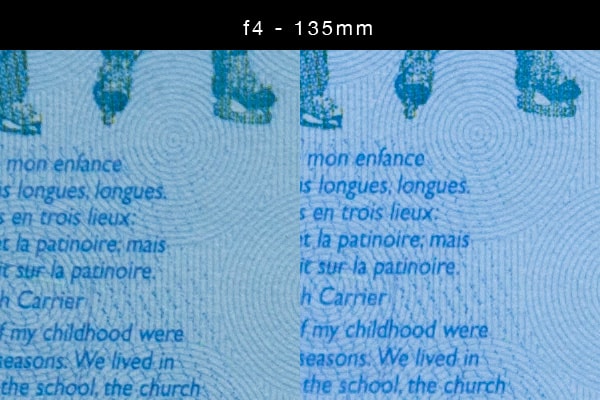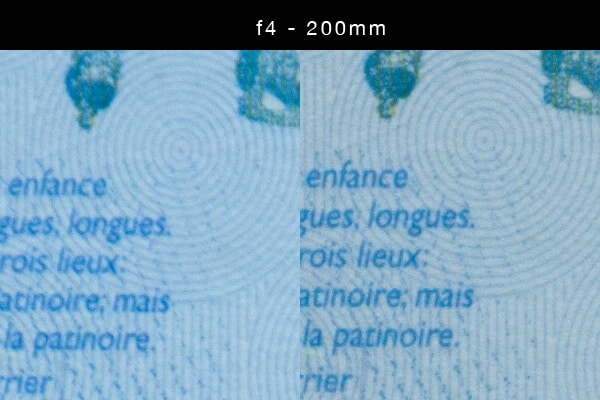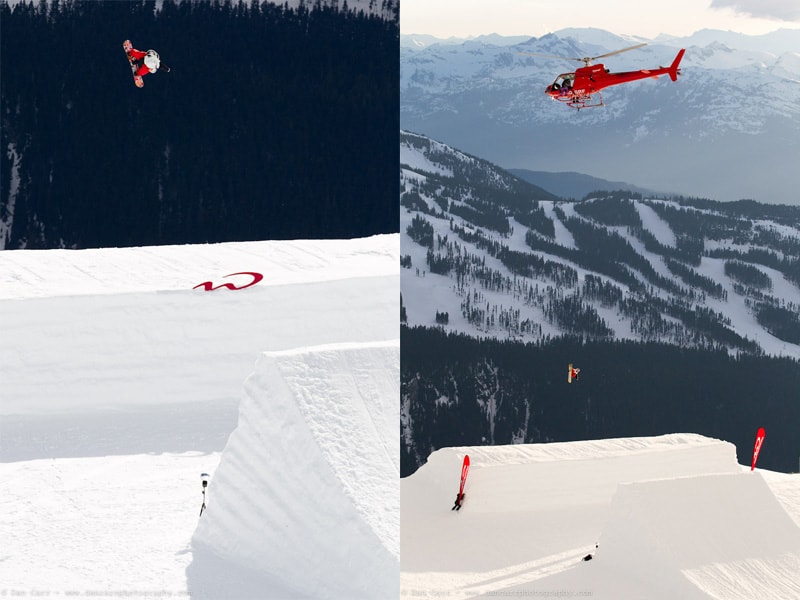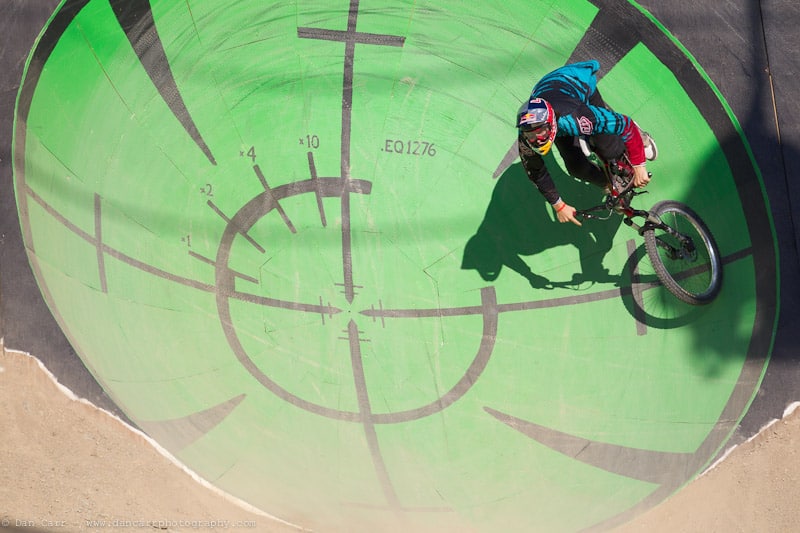The 70-200 lens is a staple in most pro photographer’s diet. The photographic possibilities with that focal are wide ranging and Canon has a 70-200 to suit almost everyone’s needs, 4 different versions in fact. The previous image stabilized version was brought out in 2001 and quickly became the new standard for such lenses. In 2010 Canon introduced the new MKII version of the lens featuring an improved 4-stop image stabilization and theoretically improved image quality. How does it stack up to the previous version and how does it compare to the 70-200 f4 L IS ? Read on to find out more…..
First a little personal 70-200 history. When I first made the jump into professional photography I picked up a 70-200 2.8 L IS and a Canon 1MKIIN. I was blown away by what I could create with that combination and it was by far my most used lens. Landscape, portrait, sports it could do it all. One thing I realized though was that I was very rarely using the lens wide open as the majority of my shots were outdoors. When Canon released the 70-200 f4 L IS in 2006 I watched the reviews flood in and was surprised to see that almost unanimously people found the image quality to be greater on the 4 L IS version. Seeings as I did not feel the need for f2.8, I sold mine and purchased the f4 L IS version to save some considerable weight in my pack. For the last few years the little f4 IS lens has taken over the role as my most used lens and done me proud. I’m continually amazed by the quality of the shots it produces from such a small package. When Canon announced the new MKII f2.8 though I was curious to see if the improvements featured in the f4 IS had been carried over, and if the MKII really justified the heavy price increase that came with it. I was able to borrow the lens for some time to see how it performed, and see if there was room again for the f2.8 version back in my pack.

Left to right: 70-200 f4 L IS , 70-200 f2.8 L ISII , 300mm f4 L IS
Physical changes
Physically there is a huge difference between the f4 and f2.8 versions of this lens. The f2.8 weighs in at 1490g and the f4 almost exactly half that at 760g. The f2.8 is slightly longer but I find the difference in diameter makes far more difference in my pack. The new MKII f2.8 feels better built than the f4 IS and the first version of the f2.8 IS, with a much sturdier feel and resistance to the focus and zoom rings. The f2.8 also features a much wider focus ring than the 2001 MKI version and comes in at 180g heavier than its predecessor. The increase in weight is something I’m definitely not a fan of though especially when you see Canon making such huge efforts to decrease the weight of some of their other new lenses like the 400mm f2.8 IS II. I was really surprised that they felt it necessary for a 12% increase. The new 300mm f2.8 is 8% lighter and they made a big deal about that!
The 70-200 f2.8 L IS II comes with a dedicated lens case and lens hood.
Another physical difference from the earlier version is the lens hood (ET-87). It now features the textured look that Canon has adopted for their hoods, helping increase resistance to scratches and decrease reflections. There is also a small push button that locks the hood into place. As before it mounts by rotating it into position, but to release it you must now depress the small button. It feels solid and I think this is a nice addition for people shooting in frantic places where lens hoods might get dislodged by a crowd.
Image Stabilization
The MKII also features an improved IS system. The previous version contained a 3-stop IS and is replaced here with the new 4-stop version. On top of this gain in hand-hold-ability, the new IS is also much quieter than both the original MKI version and also that which is in the f4 IS lens. For stills photos this is not much of a consideration for me but for video shooters out there it might well be. The controls on the side of the lens remain unchanged though with a focus range limiter switch and option to select either IS mode 1 or 2. As before, mode 1 is for general usage in low light and mode 2 is for controlling camera motion in one direction while you are panning with your subject. IS in the modern lenses is so good that there is no real need to go into huge details about what it can do. Suffice to say that it works and it works well. There have been many many times when IS has allowed me to get a shot at a low shutter speed that otherwise would not have worked. I’m a firm believer that it is worth every penny over the non-IS version.
70-200 f2.8 L IS II – MTF Charts
So how did the lens perform in testing then ? As I had my personal 70-200 f4 L IS on hand as well I have made a few comparison shots with my usual test subject, the $5 bill. As usual, take this for what you will, I am human but I did my best to be accurate. Tripod, mirror lockup, liveview focusing, multiple images at each setting. With a zoom lens there are so many permutations so I have had to limit things somewhat but you can get a bit of an idea for some of the key f-stop and focal length combinations. These are all 100% crops of an area on a $5 bill that was set up at the minimum focus distance from this lens, 1.2m.
Test Results
70mm – Wide open the new f2.8 does a good job of resolving the detail. It’s no prime lens and images would benefit from a bit of sharpening but the results are usable with plenty of contrast. At f4 the f2.8 lens has improved considerably and the f4 IS lens has now impressively entered the fray. Considering this is wide open for the f4IS lens it makes a very impressive entrance and is very nearly as sharp as the f2.8 at that aperture. It is much sharper than the f2.8IS was at it’s wide open setting. At f8 things are almost neck and neck, if anything the f4IS lens actually seems to have the edge. F16 and F32 are considerably and equally effected by diffraction at the 70mm length, f32 is totally unusable in my opinion.
135mm – At 135mm the 70-200 f2.8 L IS II performs similarly when wide open at f2.8 as it did at 70mm. At f4 again the f4 IS lens puts in a remarkable performance considering it is wide open and matches the sharpness of the 2.8 IS lens at the same aperture. At f8 the f4IS lens seems to be sharper than the f2.8 lens (!) though not by much and really they both put in great performances for a zoom lens at this point. Both lenses exhibit much less degradation in quality towards the smaller end of the aperture than they did at 70mm. F16 becomes totally usable and f32 might also be usable in a pinch. You can certainly stop it down much much further at mid zoom range and still get sharp images.
200mm – Wide open and fully zoomed is almost always the hardest area for a lens to perform and at 200mm the f2.8 IS puts in a surprisingly bad performance. This is something that I first noticed when I was experimenting with the new shorter MFD and shooting some flowers in my yard. The flowers all exhibited a ghosting effect that I have not seen before on any of my other lenses. In some cases it was so bad in fact that I was almost tempted to say that the lens is faulty, but it seems to perform fine in other areas. Most other real world examples fared far better than this test suggests but there is still room for improvement. High contrast subjects suffer worst, a white object on a black background for example. At f4 the image is much improved but I would still not say that it is very good. The f4 IS lens matches performance with it and is somewhat forgiven for being soft because it is wide open. For f8 , f16 and f32 things are on par once again and in fact at 200mm both lenses achieve the best performance at f32. A great improvement over f32 at 70mm.
Confused? Yep! This is the problem with zoom lenses, there is just so much going on inside the barrel that you have to take all settings into account to produce the very best image. The two most notable things I took from this test was that the 70-200 f4 L IS is pretty much just as good as the 70-200 f2.8 IS II at all available apertures. For the price of that lens it is really quite remarkable. The second surprising thing to me was the poor performance of the f2.8 IS II at 200mm, especially wide open. I haven’t seen anyone else out there comment on this so I am still somewhat confused by it. I’d like to get another lens off Canon to double check things but please chime in with comments below if you have experience with this lens. For the majority of the focal range though the f2.8 makes very usable images and they are much better than the previous version that I used to own. Bear in mind as well that most people would apply some sharpening to the images during their processing though and in real world shooting it is not nearly as noticeable. Take a look at the black and white image below for example that is shot at 200mm and f2.8. Looks just fine right ? For most uses, pixel peeping a 21MP image is overkill. It can still produce great images with those setting.
After the semi-clinical testing it was time for some real usage in my work. Having the lens for a couple of months really allowed me to integrate it into my daily shooting….. or not in some cases. Right off the bat I knew this thing was sharp but what I found interesting was that when I was packing my bag to go and shoot, there were still plenty of times when I reached for the f4 IS instead. Now some of you might be thinking WOW wait! What?! You have access to Canon’s latest and greatest $2400 lens and you aren’t going to use it? Yes ! I have far too many lenses to take them all on a shoot and each time I go out it is tailored specifically for what my subject is for the day. As you can see from the test images above, the f4 IS is plenty sharp! And while it feels like any other lens when I put it in my pack, the f2.8 feels like slotting a brick in there. I have chosen some images below from a few different situations, some from a commercial shoot for the ski resort Whistler Blackcomb, some from some journalistic work at the mountain bike festival Crankworx and a couple more extras that I felt illustrated some useful points.
Canon 1D MKIV + 70-200 f2.8 L IS II
1/1000 f8 ISO500 @123mm
1/1000 f9 ISO320 @70mm
1/5000 f4.0 ISO500
1/2000 f2.8 ISO100 @200mm
1/1000 f2.8 ISO1250
The minimum focus distance for the MKII lens is 47.2″ which is a considerable improvement over the 59.1″ of the older version. If you like to shoot a lot of close up nature photos then that 12″ will make a big difference. You can really get in there and pick up some nice details with this lens. Check out the two photos below.
1/500 f8 ISO1200
1/160 f10 ISO1600 @150mm
Conclusion
From a build quality point of view this is one of the best built, most solid lenses out there. It really feels like it will last you a lifetime of daily use and is in the same league as the 300mm f2.8 and other super tele lenses. From an image quality point of view it is also the best performing zoom lens that I have used but produces drastically different results in different areas. Vignetting wide open at 70mm is minimal and MUCH improved over the first version of this lens especially on a full frame body and is better than the f4 IS. At 200mm vignetting is slightly more pronounced but seems to be all but gone by the time you stop down to f5.6. Chromatic aberration seems to be well controlled throughout the range, but there is the issue of poor sharpness and ghosting wide open in some situations at 200mm. I did not notice it in the majority of situations but it did rear its head in a few cases and for some reason it suffered badly in my test shots of the $5 bill making it look far worse there than it appeared in real world shooting. Users of the original 70-200 2.8 IS will know that it is somewhat susceptible to lens flare with backlit subjects and direct light sources aimed at it. The new coatings that are applied to modern lenses have gone a long way to combat this problem and I didn’t have a single case of weird flare artifacts on my images. Its hard for me to judge AF speed against the old one as I never used it on a MKIV but suffice to say AF speed is blindingly quick and a tiny bit faster than on the f4 IS.
So would I recommend this lens despite the couple of flaws that are noted ? ABSOLUTELY YES. Am I going to keep it for my work? No, not for now. What I found was that for the majority of my shooting and subject matter I still did not prefer the f2.8 over the f4 version simply because of the weight difference. At the same apertures, the two lenses are almost identical in performance. So the choice between the two just comes down to your need for the wider f2.8 aperture or the weight saving of f4. Who needs f2.8 then ? Lots of people! For indoor sports the faster shutter speed at f2.8 will be well worth the extra money and bulk. For me though, the best use of this lens is for wedding shooters, photojournalists and event photographers. All these categories of shooting demand a versatile lens that can be used indoors and outdoors very quickly. Covering the Crankworx bike festival in a journalistic capacity really showed me the benefits of having the wider aperture and I found myself using an aperture between f2.8 and f4 all the time. The isolating DOF at these apertures is great for story telling in your images and normally I would be happy to achieve this by switching about my prime lenses, but when time is of the essence and an event is unfolding right in front of you there is just no time for swapping glass. For landscape shooters I still maintain that the f4 IS is the better choice. At higher apertures there is no difference between these lenses and it’s just not worth carrying the extra weight around, likewise for travel photographers and people like myself who shoot a lot of outdoor action sports. Would I upgrade to this lens if I still has the MK1 2.8 version? Tough question as it will probably cost you in the region of $1000 by the time you have sold the old one and bought the new one. There is a lot you can do with $1000….. but I would be inclined to say that yes it is worth it if you use it day in, day out for your business. Especially on a full frame camera, my MK1 was always slightly”mushy” wide open and the MKII is definitely improved in this area between 70mm and 170mm. It softens up at the far end of the zoom scale but still produces some great shots. Combine that with the hugely improved resistance to lens flare and much better vignetting control and it is a winner. Bottom line I think everyone should have a 70-200 in their arsenal and for me having IS is a must so it comes down to these two choices. Both will produce stunning shots but only the f2.8 will do so in very low light levels for fast moving subjects. Whether you need the f2.8 IS version or the f4 IS will really come down to what you are shooting and not any differences in the images these lenses produce.
Please support this site and help me to continue to add to it by purchasing the lens through this link to my good friends at B&H Photo for the 2.8 HERE and the 70-200 f4 L IS HERE
































